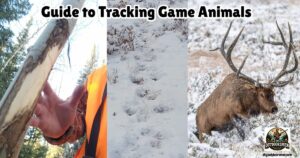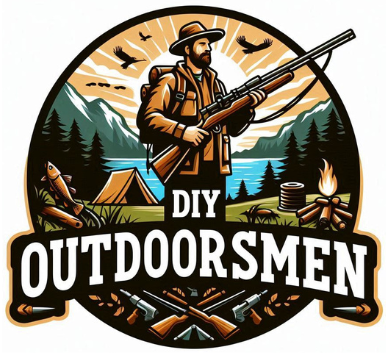Contents
- 1 Understanding the Importance of a DIY First Aid Kit
- 2 Essential Medical Supplies for Outdoor Emergencies
- 3 Additional Tools for an Outdoor First Aid Kit
- 4 Building Your DIY First Aid Kit
- 5 Planning for Emergencies Beyond Injuries
- 6 Improving Your Response With Advanced Tips
- 7 Additional Insights on Maintenance and Upgrading
- 8 Common Questions About DIY Outdoor First Aid Kits
- 9 Maintaining and Upgrading Your First Aid Kit
- 10 Wrapping Up
DIY first aid kits for outdoor emergencies serve as a practical and uplifting solution for anyone who loves spending time in nature. I believe that being prepared with a well-stocked kit increases confidence and can help manage emergencies effectively. This article outlines how to design and build a reliable DIY first aid kit that is suitable for various outdoor activities.
QUICK LOOK: First Aid Kits for Outdoor Emergencies
- Having a reliable DIY first aid kit is essential for anyone who spends time in nature. I trust that taking the time to build and maintain your own kit not only prepares you for emergencies but also deepens your understanding of first-aid practices.
- Before heading out on any adventure, I make sure that my kit is complete and ready. I also review my first aid training and always inform someone of my plans, especially on longer trips.
- My DIY first aid kit is built around a core set of essential medical supplies. I ensure that my kit covers a range of potential injuries by including components that address wound care, pain relief, and other urgent medical needs.
- The process of creating a DIY first aid kit has not only equipped me to handle injuries but has also deepened my understanding of emergency preparedness.
- With every addition and update, you add to your capability to address emergencies effectively, making your next outdoor adventure that much safer.
- By investing time in planning, practicing, and periodically upgrading your kit, you set yourself up for a safe and fun adventure in even the most unexpected situations.
Understanding the Importance of a DIY First Aid Kit
Having a first aid kit that you have assembled yourself is both practical and reassuring. I have found that a DIY kit allows me to include all the items I know I will need when out in the outdoors. When you are away from professional help, having a kit that covers common injuries and emergencies can make a big difference in response and recovery times.
Outdoor activities such as hiking, camping, or fishing expose you to hazards that may lead to minor injuries. Cuts, blisters, or allergic reactions can become problematic if not treated promptly. I personally appreciate that a DIY first aid kit is tailored to the unique challenges of your outdoor adventures, making it an essential companion during any expedition.
Essential Medical Supplies for Outdoor Emergencies
My DIY first aid kit is built around a core set of essential medical supplies. I ensure that my kit covers a range of potential injuries by including components that address wound care, pain relief, and other urgent medical needs. This organized approach helps me manage any common issues until professional help is available.
Wound Care Supplies
Proper wound care is one of the first things to consider when building your kit. I always carry several types of adhesives and cleaning agents:
- Adhesive bandages in various sizes to cover minor cuts and scrapes.
- Antiseptic wipes to clean the injury and reduce infection risk.
- Sterile gauze pads to cover larger wounds.
- Medical tape to secure gauze pads or bandages.
- Antibacterial ointment to help prevent infection.
- Blister treatment items such as moleskin and extra bandages to protect and soothe skin after long walks.
These components ensure that I am ready to manage common minor injuries. I believe that having these items in an organized fashion can reduce the risk of complications during outdoor emergencies.
Pain Relief Options
Pain can be a major factor when dealing with outdoor injuries. My kit includes several options to address discomfort:
- Pain relievers such as aspirin or ibuprofen to manage pain and reduce inflammation.
- Antihistamines for allergic reactions, which can be vital if you encounter insect bites or exposure to allergens.
- Antidiarrheals and stool softeners to ease discomfort during digestive emergencies.
These medications are selected to cover a range of common reactions one might experience. I choose items that work quickly and are easy to administer when needed.
Other Useful Medical Items
In addition to basic wound care and pain relief, other practical tools are highly valuable in a well-rounded first aid kit:
- Tweezers to remove splinters or ticks.
- Safety pins for securing bandages or making minor repairs to clothing or equipment.
- A CPR mask in case of respiratory emergencies.
- Trauma shears that help cut through clothing or bandages during crises.
- A first aid manual or pocket guide that provides clear instructions for common injuries.
- An oral thermometer to monitor body temperature in cases of fever or heat exhaustion.
Including these items ensures a broad scope of treatment to handle minor emergencies until professional assistance is available.
Additional Tools for an Outdoor First Aid Kit
An effective outdoor first aid kit goes beyond just medical supplies. I have found that including a few essential tools can greatly step up your preparedness.
For instance, I always pack a reliable knife or multi-tool. This versatile item can be used to cut bandages or even prepare food when necessary. I also include water purification tablets or a simple filter, both of which come in handy when clean water is scarce. Additionally, a liquid bandage is often added to my kit because it can seal superficial cuts when a traditional bandage is insufficient.
Each tool in my kit is chosen to serve multiple purposes, ensuring that I am well-prepared for unexpected situations. This flexible, multipurpose approach makes it possible to respond to a variety of emergencies with the resources available to you in the wild.
Building Your DIY First Aid Kit
Planning and assembling your first aid kit is a step-by-step process that I have refined over many outdoor trips. I make sure to consider the following tips when putting together my kit:
- Choose a durable container: The container must be waterproof and sturdy. I prefer a bag or hard case that protects the contents from the elements and remains convenient to carry.
- Keep it organized: Using compartments or small pouches is essential. I organize items by type so I can access them quickly during an emergency.
- Regularly check and replenish: I inspect the items in my kit before every outing. It is very important to replace expired medications and worn-out supplies to ensure everything is ready to use.
- Tailor the kit to your needs: The environment and type of outdoor activity should influence your kit choices. I customize my kit based on factors such as local weather, terrain, and the length of my adventure.
- Learn basic first aid skills: Even the best supplies require proper use. I make it a point to update my first aid knowledge so I can use my kit effectively when the need arises.
Following these guidelines has helped me create a kit that is both all-in-one and easy to manage. I consider this process an essential part of being ready for outdoor adventures.
Planning for Emergencies Beyond Injuries
A DIY first aid kit is not a substitute for professional medical care. Nonetheless, the right kit can provide critical assistance during emergencies. I also include a few extra items that go beyond treating personal injuries:
- Personal Medications: I always carry a supply of any prescription medications I require. This is especially important when venturing into areas with limited access to healthcare.
- Water and Food: Carrying water or having a way to purify water along with non-perishable, high-calorie food items is vital. In emergencies where you might be stranded, these provisions can make all the difference.
- Shelter Items: Items such as a lightweight tarp or an emergency blanket can protect you from harsh weather if you need to set up a quick shelter.
- Signaling Devices: Small yet important devices like a whistle, a mirror, or flares help attract attention when you need rescue.
These additional considerations extend the utility of my kit, ensuring I can address both medical and non-medical emergencies while out in the wild.
Improving Your Response With Advanced Tips
Once the basics are covered, I recommend checking out some advanced tips to further step up your emergency response skills. These extra strategies can step up the effectiveness of your kit and increase your confidence during an unexpected crisis.
Stay Informed: I make it a habit to review the latest first aid techniques and local emergency protocols. This continuous learning process helps me be prepared should an emergency arise.
Practice First Aid Scenarios: Regular drills allow me to familiarize myself with my kit. Routine practice ensures that I can quickly access and use its contents effectively when needed.
Customize With Weather-Appropriate Items: Depending on the season or weather conditions, I adapt the contents of my kit. For example, during colder months, I might include extra insulating materials and heat packs, whereas in summer I ensure I have additional hydration supplies and sunscreen.
Expand Your Kit Gradually: I started with a basic kit and built on it over time to include more specialized items. This gradual approach not only helps me manage costs but also lets me learn how each new item works before adding more complexity.
To further solidify my preparedness, I have begun adding detailed notes and instructions for each item in a small travel journal. This record-keeping allows me to review past experiences and update the kit based on what worked best in real-life scenarios. Over time, these observations have helped me refine my approach and ensure that every piece of equipment serves a clear purpose during an emergency.
Additional Insights on Maintenance and Upgrading
Maintaining your first aid kit is as important as assembling it. I routinely inspect my kit and update its contents as my outdoor habits change. Keeping track of expiration dates and replacing used items ensures that my kit is always ready for any situation.
Whenever I return from a trip, I take time to review what worked well and what could be better. This reflective process has taught me valuable lessons about storage, organization, and the need to occasionally add new items based on recent experiences.
Over the years, this habit of continual upgrading has allowed me to adapt my kit to various challenges. Whether it is incorporating newer, more effective products or simply rearranging items for quicker access, I believe that staying proactive is key.
I also share my findings with fellow outdoor enthusiasts, which creates a community where useful tips are exchanged and tested in real-life conditions.
Common Questions About DIY Outdoor First Aid Kits
I have encountered several common questions while building and refining my first aid kit. Addressing these concerns can be useful for anyone starting out on this adventure.
What are the most important items to include in a basic DIY first aid kit?
I suggest focusing on essentials such as adhesive bandages, antiseptic wipes, sterile gauze pads, medical tape, and antibacterial ointment for wound care. Including pain relievers, antihistamines, and tools like tweezers and a knife rounds out the basics. Additional items such as safety pins, a CPR mask, and trauma shears bring extra security during emergencies.
How often should I check and replenish my first aid kit?
I check my kit before each outdoor adventure. Regular reviews help ensure that medications remain effective and that supplies are intact. I replace any expired or used items as soon as possible.
Can I customize my kit for specific outdoor activities?
Absolutely. I recommend tailoring your kit based on the terrain, weather conditions, and type of outdoor activity. For example, if you’re hiking in remote areas, adding items like water purification tablets and extra food is a sensible idea.
What if I don’t have training in first aid?
While a well-stocked kit provides the necessary tools, I highly encourage learning basic first aid skills. Many courses are available that can teach you how to use each item safely and effectively during emergencies.
Maintaining and Upgrading Your First Aid Kit
Regular maintenance of your first aid kit is an important part of being prepared. I routinely inspect my kit and update its contents as my outdoor habits evolve. Keeping track of expiration dates and replacing used items ensures that my kit is always ready for an emergency.
I also consider feedback from past experiences when deciding what to add. If I encounter a situation where a certain supply would have been beneficial, I make a note to include it for future trips. This process of continuous improvement helps me refine the kit so that it meets my needs effectively and stays relevant with each new adventure.
Wrapping Up
Having a reliable DIY first aid kit is extremely useful for anyone who spends time in nature. I trust that taking the time to build and maintain your own kit not only prepares you for emergencies but also deepens your understanding of first-aid practices. Being proactive and prepared is key to enjoying outdoor activities safely.
Before heading out on any adventure, I make sure that my kit is complete and ready. I also review my first aid training and always inform someone of my plans, especially on longer trips. This extra step provides an additional layer of safety and reassurance during your outdoor ride.
The process of creating a DIY first aid kit has not only equipped me to handle injuries but has also deepened my understanding of emergency preparedness. My advice is to start small, learn as you go, and gradually build the kit that best suits your lifestyle.
With every addition and update, you add to your capability to address emergencies effectively, making your next outdoor adventure that much safer. This article has explored a range of critical topics—from essential medical supplies and useful tools to advanced tips for keeping your kit up-to-date.
By investing time in planning, practicing, and periodically upgrading your kit, you set yourself up for success in even the most unexpected situations. Taking these steps means you’re not just relying on luck; you’re actively preparing to face any challenge that comes your way in the great outdoors.
Check Out Our Most Recent Articles:
- Understanding Deer Behavior To Improve Your Hunt

- Complete Guide On Tracking Game Animals

- DIY 4-Step Guide To Field Dressing And Quartering A Deer

- Night Vision Binoculars For Nocturnal Hunting

- The Science Behind Camouflage Patterns For Deer Hunting

- Binocular Accessories For Hunters

As always, stay safe, enjoy the journey and please try to leave it cleaner than you found it. If you have any comments, questions, ideas, or suggestions please leave them in the comment section below and I’ll get back to you ASAP. You can follow us on YouTube: Man Art Creations for videos of our DIY Adventures.
P.S. – Thanks so much for checking out our blog we really appreciate it. Just so you know, we may receive a commission if you click on some of the links that appear on our site. This helps us keep our content free and up-to-date for everyone. We appreciate your support!



